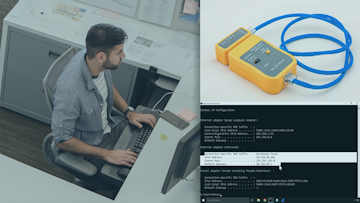
There are what feels like a near infinite number of moving parts in a data network, which means that when things go wrong, they often have cascading consequences that can prevent users from accessing the resources required to do their jobs. In this course, Network Troubleshooting and Tools, you will learn techniques and tools for troubleshooting broken network components. First, you will learn how to use command line utilities like ipconfig, ping, nslookup, Nmap, and netstat. Next, you will learn how to use Wireshark to capture and examine an unencrypted website. Finally, you will learn to use iperf to measure the bandwidth of an...
Read more
Good to know
Save this course
Activities
Career center
Computer Network Architect
Network Engineer
Network Administrator
Security Analyst
IT Manager
Data Analyst
Cloud Architect
Systems Engineer
Database Administrator
Software Developer
Web Developer
Computer Support Specialist
Systems Analyst
Information Security Analyst
IT Auditor
Reading list
Share
Similar courses
OpenCourser helps millions of learners each year. People visit us to learn workspace skills, ace their exams, and nurture their curiosity.
Our extensive catalog contains over 50,000 courses and twice as many books. Browse by search, by topic, or even by career interests. We'll match you to the right resources quickly.
Find this site helpful? Tell a friend about us.
We're supported by our community of learners. When you purchase or subscribe to courses and programs or purchase books, we may earn a commission from our partners.
Your purchases help us maintain our catalog and keep our servers humming without ads.
Thank you for supporting OpenCourser.


